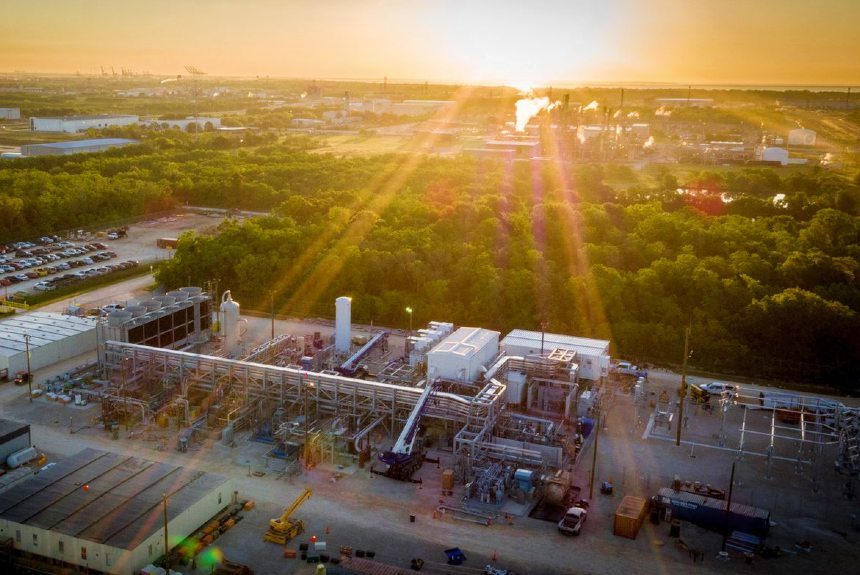Carbon capture technology has become popular recently in connection to climate change and is touted as one of the solutions to reduce CO2 emissions in the atmosphere.
The BBC article reports the first major carbon capture plant in Northwich, Cheshire. The government granted £4.2m to Tata Chemicals Europe towards its £16.7M project to recycle 40,000 tonnes of waste carbon dioxide for manufacturing. The amount of CO2 the plant will capture equals “taking 22,000 cars off the road.”
The plant will begin operating in 2021 and will be the “first in the world to purify and liquefy CO2 as a raw material to make sodium bicarbonate, which is used in food and pharmaceutical processing”, the article says.
Another carbon capture plant, Drax power station in Selby, North Yorkshire, can also recycle a tonne of CO2 daily.
The Managing Director of Tata Chemicals says the project is “hugely exciting’. Energy minister Chris Skidmore said: “If we are to become a net-zero emissions economy and end our contribution towards global warming, then innovative schemes like Tata Chemicals’ will be essential.” But Mike Childs warns that “carbon capture must not be used as an excuse to keep the UK hooked on fossil fuels.”
A brief history of carbon capture technology
Carbon capture technology had existed long before climate change became a major global issue. In the 1920s, gas processing companies in the US were using carbon capture to separate carbon dioxide from natural gas reservoirs to harvest and sell methane gas.
In the early 1970s, captured carbon dioxide was piped to an oilfield to boost oil recovery, known as Enhanced Oil Recovery (EOR). EOR projects successfully capture millions of tons of CO2 that accumulates in underground rocks, industrial facilities, or even oil fields. CO2 is then separated and used to produce more oil. After this, the carbon dioxide is left or stored in the depleted oil field to prevent it from permanently contributing to the greenhouse effect and climate change.
Fast forward to 2012, five large-scale carbon capture and storage (CCS) projects and three pilot projects have been operating worldwide. More are still being developed, and funding is being secured to help meet emissions reductions.
The use of CCS technology has never been more important now as we find solutions and innovation to stop climate change from happening. When asked whether the technology works, Julio Friedmann, a senior research scholar at the Center on Global Energy Policy at Columbia University, says yes, it does, and industrial facilities that employ it on their flue gas have reduced their CO2 emissions by 55 to 90% (Varanasi, 2019).
CCS proves to be an up-and-coming solution to address climate change. Nevertheless, we should not focus on the real source of the problem: our continuous dependence on fossil fuels. Gradually, transitioning from it would be a more sustainable and better long-term solution.
Sources
Northwich CO2 plant ‘worth 22,000 cars off the road’. (2019, June 27). BBC News. Retrieved from https://www.bbc.com/news/uk-england-manchester-48785945
A Brief History of CCS and Current Status (n.d.). Ieaghg. Retrieved from https://ieaghg.org/docs/General_Docs/Publications/Information_Sheets_for_CCS_2.pdf
Varanasi, A. (2019, September 27). You Asked: Does Carbon Capture Technology Actually Work?. State of the Planet. Retrieved from https://blogs.ei.columbia.edu/2019/09/27/carbon-capture-technology/
PHOTO CREDIT: By Net Power Inc. – https://www.netpower.com/, CC BY-SA 4.0, https://commons.wikimedia.org/w/index.php?curid=80737318



Leave a Reply